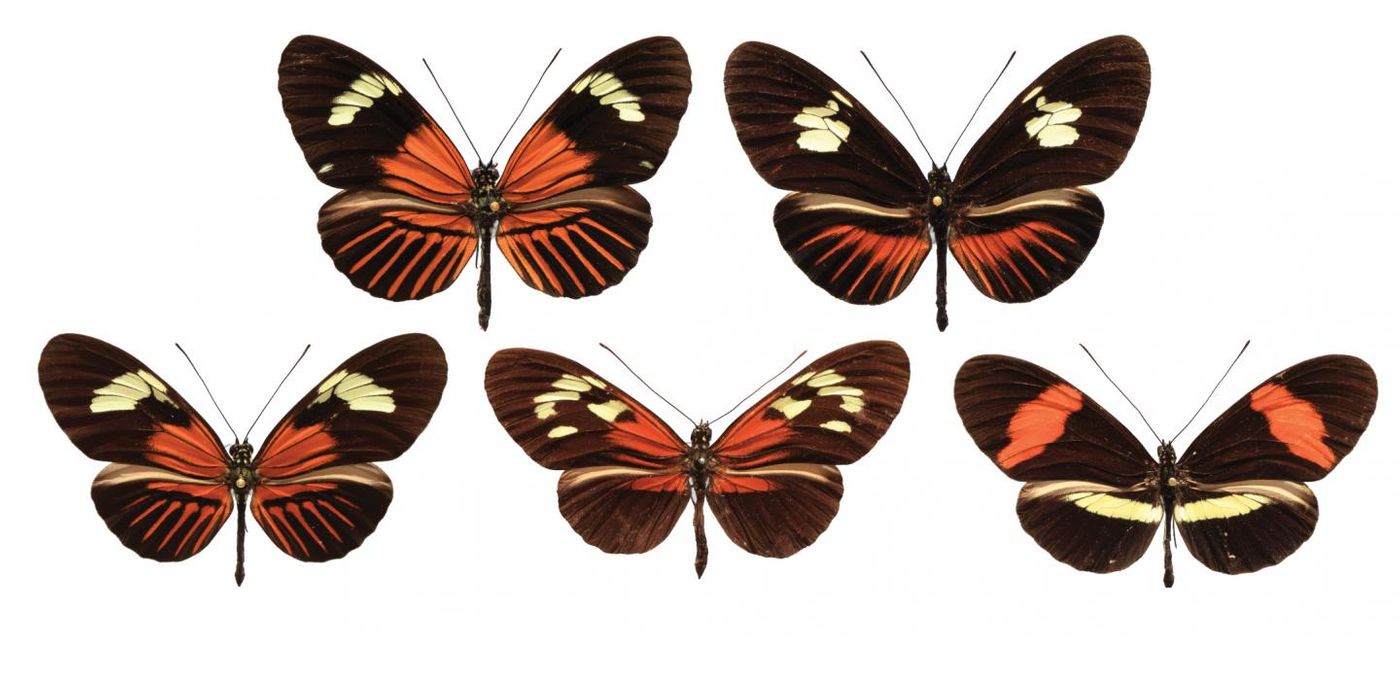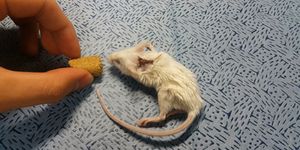Amazonian
Heliconius butterflies have a distinctive coloring, known as the “dennis red patch” and the “ray red streaks” on each side of the wing. These colors come from different genes that derived from two completely different species of butterfly. These two species interbred almost two million years ago, an event that led to the existence of the current
Heliconius butterflies.
“Survival of the fittest” is often a phrase that rings true during the process of evolution. Over time, natural selection favors the qualities of organisms that make them stronger, tougher, or more likely to produce offspring. What’s in it for the butterflies to exchange wing color? Scientists believe that the diversity of
Heliconius wing color allows multiple species of butterflies to communicate with “common warning signs” that deter predators from attacking or eating the butterflies. Thus, the
Heliconius populations that have the most diverse arsenal of wing patterns could potentially have the best chance of avoiding predation.
In a new study from the University of Cambridge published in
PLOS Biology, senior author Chris Jiggins, PhD, and his team realized that natural selection wasn’t favoring wing pattern diversity just from the sharing of genes through interbreeding of butterfly species. Over time, new combinations of genes could produce completely new wing patterns, controlled by “independent genetic switches” that Cambridge professor Richard Wallbank likens to a “genetic paint-box.”
After sequencing and analyzing the genomes from 142 butterflies from the 17 species of
Heliconius, the researchers identified the switches as independently controlling their associated gene. They focused specifically on the “dennis red patch” and “ray red streaks” of the
Heliconius.
"By identifying the genetic switches associated with bits of wing pattern, when they evolved and how they diverged, we can actually map onto the species tree how these little regions of color have jumped between species,” Jiggins said.
The connection between the genetic switches and the wing pattern genes they control is utterly specific, creating truly unique patterns of color in each individual butterfly.
"It is the switches that are independent, which is much subtler and powerful, allowing evolutionary tinkering with the wing pattern,” Wallbank said.
Scientists will continue to watch the
Heliconius butterflies’ wing pattern grow in diversity, evolved after the interbreeding of species over two million years ago.
Source:
University of Cambridge









